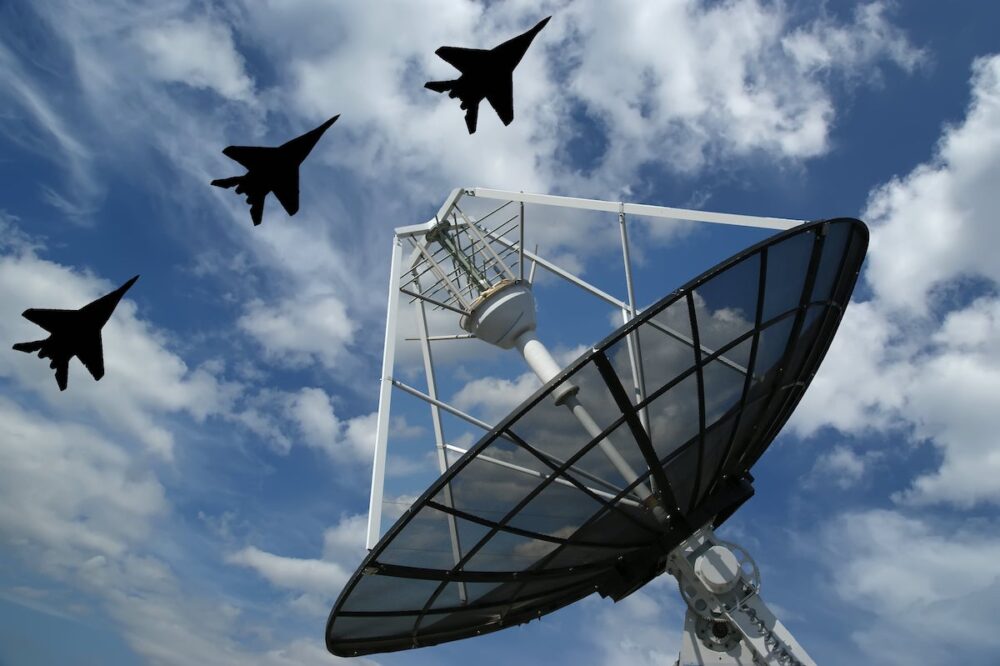Download this Use Case in PDF format
Executive Summary
Joint All-Domain Command and Control (JADC2) is the next evolution in the Department of Defense’s strategy to accelerate and improve decision making by enabling greater access to intelligence across all branches and in all domains: land, sea, air, space and cyberspace. Establishing seamless interconnection and interoperability among intelligence-gathering sensors and networks across all service branches will link warfighters to critical data faster—enabling the best decisions and outcomes.
Sigma Defense delivers an innovative approach to solving the JADC2 challenge. It combines the flagship Stingray Tactical Relay technology with a larger technology ecosystem implemented by the DoD service branches providing command and control (C2) services—traditionally NIPRNET, SIPRNET and JWICS—to garrison entities with extensions to the tactical environment.
Sigma Defense achieves this with the Stingray Tactical Relay solution: an all-in-one agnostic transport platform that supports both sensor data transport and C2 data transport in a single system. Through this platform, stakeholders across all services and domains can transport and receive up-to-date C2, intelligence, surveillance and reconnaissance data in real-time or near real-time.
“Command and Control in an increasingly information-focused warfighting environment have never been more critical. JADC2 will enable the DoD to act at the speed of relevance to improve U.S. national security. JADC2 is delivering capabilities beginning now, and it will continue to be funded in the coming years.”
— Deputy Secretary of Defense Dr. Kathleen Hicks, March 17, 2022
The Challenge
Integrating data across services and domains is possible today, but the process is cumbersome and time-intensive, often rendering the intelligence ineffective.
With each service branch maintaining its own C2 data transport for NIPRNET, SIPRNET and JWICS
to the tactical edge, a lack of interoperability and redundancy among systems creates inefficiencies and communications breakdowns. The disparity among DoD branches, as well as the scope of CONOPS program offices use to develop solutions, can result in as many as three different SATCOM systems in one location, all pointing in the same direction into the sky, implemented by three different program offices. Deploying multiple stacks of equipment that aren’t fully interoperable can dampen the promise of true JADC2.
To address these challenges, the Pentagon lays out “three guiding C2 functions of ‘sense,’ ‘make sense,’ and ‘act.’”1 It also spells out lines of effort (LOEs) designed to organize and guide actions to deliver JADC2 capabilities.2 These various LOEs encompass people, processes and technology. While there is no single solution that solves for all JADC2 challenges, aligning these three elements and streamlining the process across the joint forces will drive JADC2 capabilities.
A Better Way With Stingray: Smaller, Faster, Efficient, Agnostic
JADC2 is data driven, with a focus on getting data from sensor to shooter as quickly as possible without compromising security. Stingray Tactical Relay is Sigma Defense’s tactical relay system
for agnostic transport, combining all C2 services and sensor data (traditionally housed on separate hardware platforms) into a single platform. The antenna, modem, transport router, switching, software, cabling and encryption are integrated into a single ruggedized and compact platform that is fully JADC2 compliant, making it compatible with virtually any mission environment.
With Stingray, all network traffic—NIPRNET, SIPRNET and JWICS—can run through the same platform, allowing decision-makers to access critical data from any service or domain, without using separate communications solutions. This supports faster and better decision-making while significantly reducing the size and volume of communications equipment deployed in the field.
Sigma command and control solutions are designed to improve a commander’s ability “to organize, understand, plan, decide, direct, and monitor all Joint Force and mission partner actions across all domains.”3 The ultimate objective for a C2 solution in support of JADC2 is seamless system integration from each partner’s C2 system so it can be accessed, viewed, and acted upon by every other approved partner. Sigma Defense’s agnostic approach to technology and extensive experience supporting the joint forces are fundamental to building a true JADC2 strategy.
1 Department of Defense, Summary of the Joint All-Domain Command and Control Strategy, March 2022.
2 Theresa Hitchens, Exclusive: J6 Says JADC2 is a Strategy; Service Posture Reviews Coming, Breaking Defense, January 2021.
3 Department of Defense, Summary of the Joint All-Domain Command and Control Strategy, March 2022.
-
Sense
Integrate Information Across All Domains and the Electromagnetic Spectrum: Discover, collect, correlate, aggregate, process, and exploit data from all domains and sources (friendly, adversary, and neutral) across NIPRNET, SIPRNET, and JWICSand share the information as the basis for understanding and decision-making. -
Make Sense
Understand the Operational Environment: Fuse sensor feeds and current state from NIPRNET, SIPRNET, and JWICS activities to transform data into knowledge and better understand and predict the operational environment. -
Act
Decide and Disseminate: Combine the human elements of decision-making with the technical means to perceive, understand and predict the actions and intentions of adversaries.
Proven C2 Expertise from Sigma Defense
Sigma Defense, a technology company with a long history of delivering mission-critical tactical communications solutions across the DoD, continues to innovate. Our team brings decades of engineering and communications experience from serving and supporting the missions of the U.S. Special Operations Command, Defense Information Systems Agency, the U.S. Air Force, and other Defense agencies.
Conclusion
With Sigma Defense’s agnostic command and control solutions—predicated on our Stingray Tactical Relay technology—mission leaders can request and send data regardless of services or domains involved. By unifying people, processes, technology and data on a single platform, Stingray enables faster, more effective decisions with greater interoperability, visibility and connectivity.


